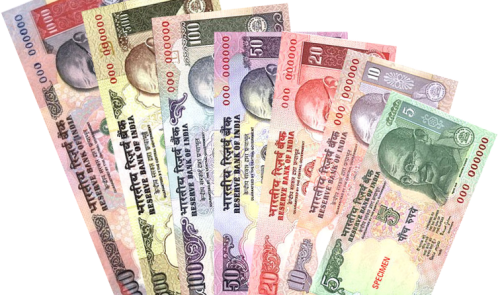The Situation in India
A large chunk of the disabled population in India is blind. Estimates range from about 8 million to a whopping 15 million people who are reportedly blind in India. Even if we consider the lower number, blind people in India are a large minority and they have the right to be given an equal footing so that they too can be socially and economically independent and productive.
Indian currency with regard to notes is not very durable or distinguishable. True, there are variations in sizes and textures of freshly minted currency notes but over a period of time they get soiled, soggy and become ‘soft’ which then makes them indistinguishable and quite easy to get torn. Many countries issue plastic currency which is not only more durable but it is also easier to modify them and allow for raised lettering and holographic icons. While it is easy to distinguish a 10 Rupee Note and a 1000 Rupee Note, it is virtually impossible to make a distinction between a 100 Rupee Note and a 500 Rupee Note – especially if they’re old and soggy.
The Situation with coins is quite similar, though to a less degree.
The previous one Rupee Coin is uniformly rounded. The Raised Lettering is distinguishable only on very careful inspection by touch.
The Current one Rupee Coin is small in size which makes it easily Distinguishable – a desirable quality.
The Current Two Rupee Coin is virtually indistinguishable in size and shape from the previous One Rupee Coin which is why the Smaller One Rupee Coin is a welcome addition.
The older Two Rupee Coin has the shape and edges which are very distinct and extremely easy to identify just by touch. The newer coin does not have the same identifying features and it is easy for blind people to get confused.
The old Five Rupee Coin had a distinctive weight and thickness that made it the most easy to identify.
The current Five Rupee Coin lacks the thickness and is much harder to identify and distinguish from the other coins but it does have a little extra weight to it.
The Ten Rupee Coin – though not as commonly available as the other coins is remarkably easy to identify. The Coin has extra weight and has a distinctive ring in the center which helps to identify it merely by touch.
Developments in Foreign Jurisdictions
Most of the Nations that produce their own currency have yet to recognize this right as they have yet to reach a stage where they can start focusing on Human Rights issues and assisting disabled people but within India, the problem is large and ever growing and the time has come that the government takes some initiative to help those who are truly need help.
Over a period of time certain nations have however, taken note of this issue and have instated reforms in currency production and have provided alternative relief to blind citizens. Some of the remedies have been highlighted below:-
- Canada: Canadian Bank Notes feature a series of Tactile Symbols in the form of dots which help to identify the note. The Bank of Canada also has a service through which they provide free ‘Electronic Bank-Note Readers’ which can swiftly determine and announce to the user the denomination of the currency.
- European Union: The Euro, as the currency of the European Union has traditionally been printed in varying sizes alongwith a slightly raised print that allows the denomination to be felt. The notes also have varying thicknesses and sometimes a difference in the edge shape as well – making it easier to distinguish.
- Singapore: The Singapore Dollar also features currencies of varying sizes and colors for the partially blind while also featuring Braille symbols in a specific corner on the currency note.
And similarly Japan, Australia, Sweden and the U.K., have all enacted measures to ensure that their currency that the visually impaired do not lose their independence in relation to currency.
In a historic judgment in the case of American Council of the Blind vs. Henry M. Paulson, Secretary of Treasury the Court Held that American Bank notes were in violation of the Rehabilitation Act of 1973 and that the demands of the American Council of the Blind were completely reasonable. The treasury had not done enough to provide meaningful access of currency to blind people which affected their natural rights and impacted their social and economic well being.

